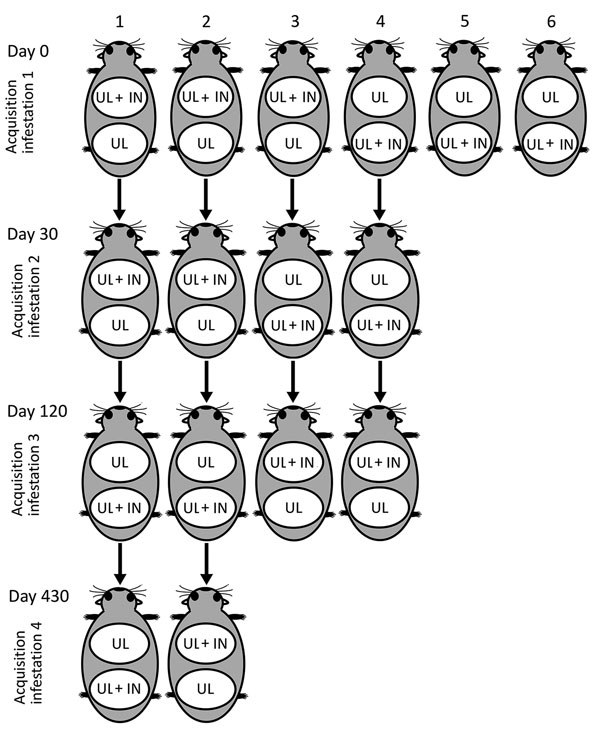Volume 24, Number 11—November 2018
Research
Rickettsia rickettsii Co-feeding Transmission among Amblyomma aureolatum Ticks
Figure

Figure. Experimental procedures to evaluate co-feeding transmission of Rickettsia rickettsii among Amblyomma aureolatum ticks on 6 guinea pigs (as numbered) subjected to up to 4 consecutive infestations at 0, 30, 120, and 430 days postinfestation, Brazil. Each guinea pig in each acquisition infestation had 2 cotton sleeves (feeding chambers) glued to its shaved back; the 2 chambers each received 200–300 UL, whereas only 1 chamber received 50 R. rickettsii IN. White oval indicates feeding chamber. IN, infected nymph; UL, uninfected larvae.
Page created: October 17, 2018
Page updated: October 17, 2018
Page reviewed: October 17, 2018
The conclusions, findings, and opinions expressed by authors contributing to this journal do not necessarily reflect the official position of the U.S. Department of Health and Human Services, the Public Health Service, the Centers for Disease Control and Prevention, or the authors' affiliated institutions. Use of trade names is for identification only and does not imply endorsement by any of the groups named above.